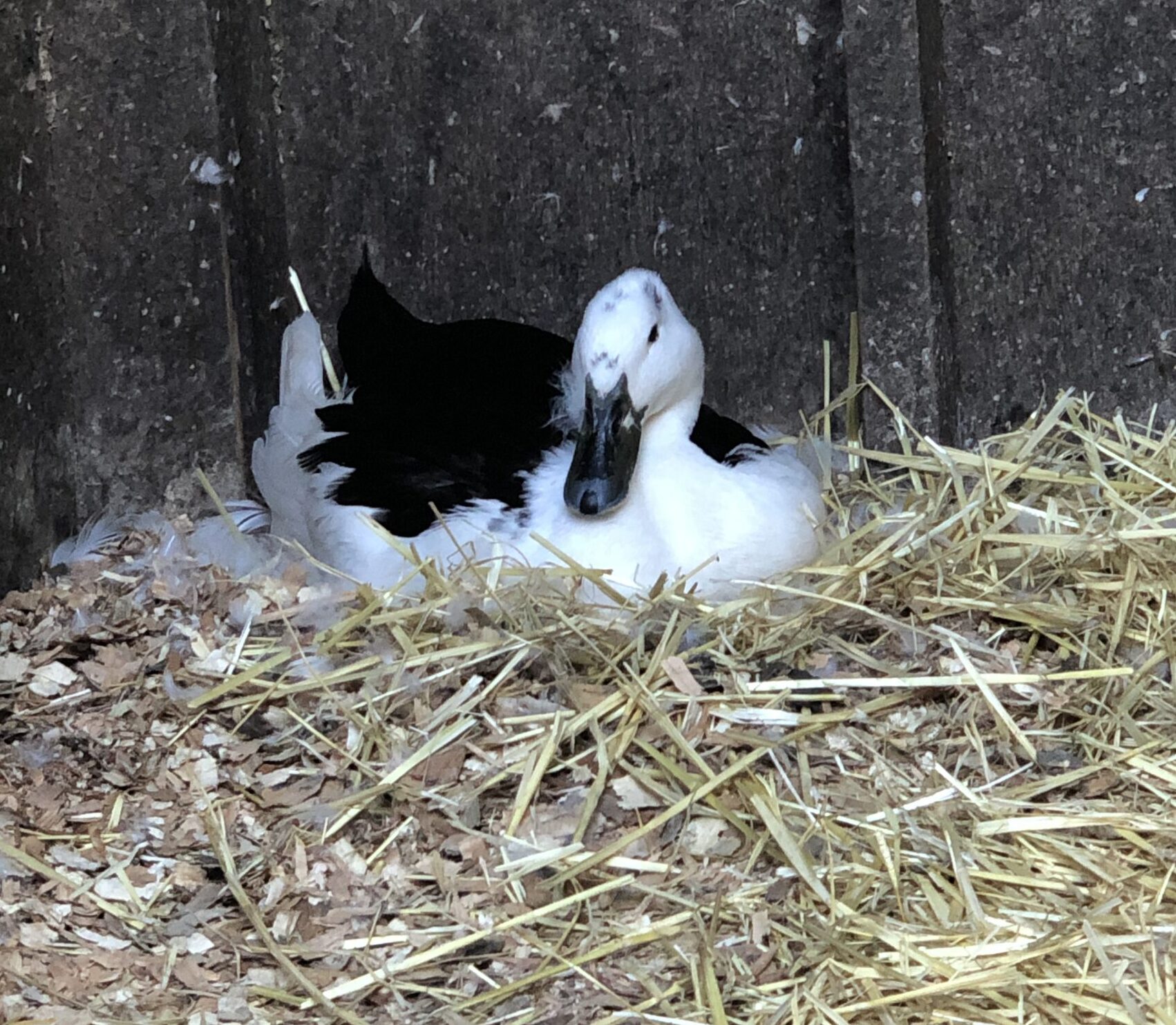Natural Incubation: Ducks and Geese
This article on natural incubation is being republished from Acorn Hollow Bantams website with permission from Lou Horton.
This time of year, my email brings many questions about incubation such as what kind of incubator works best, and does this breed or that breed make good setters and parents. Incubators and the pitfalls of managing them could be the subject of several articles so this time around, I will limit myself to natural incubation in general and the use of ducks and geese as setters in particular. I am starting with natural incubation since that is the best and most reliable way for a beginner to get some ducklings or goslings out before they have learned the management of an incubator.
First, let’s talk about those breeds that do not generally make good parents. In the ducks, those would include the Pekins, the Campbells, and the Runners. Those breeds were developed for production purposes – the Pekins for meat, the Runners and the Campbells for eggs. None of them were permitted to develop broody tendencies. Before I get notes from those who have owned individual birds from those breeds that made good setters, let me mention that while there are always exceptions that does not mean that the breed in general produces numbers of good setters.
Which breeds make especially good setters among the ducks? I would mention first and foremost the Muscovys which tend to be outstanding. I would also include the colored Calls (not the Whites). Most Mallards make great setters as do Wood Ducks and Mandarins. In general, I would say that older females will outperform young ones in the setting department. That is also true of geese. In the geese, I would have to say that China’s tend to be less desirable as setters. Most of the other breeds I have tried make decent to excellent setters but in fairness, I have not bred all of the breeds of geese. In my experience, the Pilgrims are outstanding as are Canadas and Egyptians. In the other breeds, one has to test individual females for the devotion and patience necessary to get the job done. In Embdens, for example, I had some wonderful setters and also some females that got bored with the whole project at about three weeks through incubation.
In the geese, I would have to say that China’s tend to be less desirable as setters. Most of the other breeds I have tried make decent to excellent setters but in fairness, I have not bred all of the breeds of geese. In my experience, the Pilgrims are outstanding as are Canadas and Egyptians. In the other breeds, one has to test individual females for the devotion and patience necessary to get the job done. In Embdens, for example, I had some wonderful setters and also some females that got bored with the whole project at about three weeks through incubation.
In order to have the best chance of success with either ducks or geese hatching their own eggs (or the eggs of another breed) you need to stack the odds in your favor. You do that by providing nests where the mother and her eggs will not be bothered by other birds and are protected from predators. A secluded spot away from where the other birds congregate would be best. The projected setter should be treated for parasites prior to setting, should have access to food and water (for bathing too, if possible), and should be provided with a nest that is the appropriate size (so the eggs do not roll out from under her) and well bedded. I have found clean straw and pine shavings to work well. If the nest is not in contact with the ground, it may be wise to spray the eggs with warm water occasionally. Some breeders like to provide a piece of sod turned upside down and shaped into a bowl when the nest does not contact the ground. Keep track of when the eggs were set so you can project hatching time. It is safest to remove the newly hatched youngsters for rearing away from the parent in most cases. There is a whole list of bad things that can happen to hatchlings when they remain with the parents. Have brooder facilities all set up and ready to go. Also, have appropriate start/grow mash on hand.
Assuming that the flock owner does his/her part and that the female duck or goose proves to be a good setter, the odds are pretty good that a successful hatch can be secured from natural incubation.
By Lou Horton
